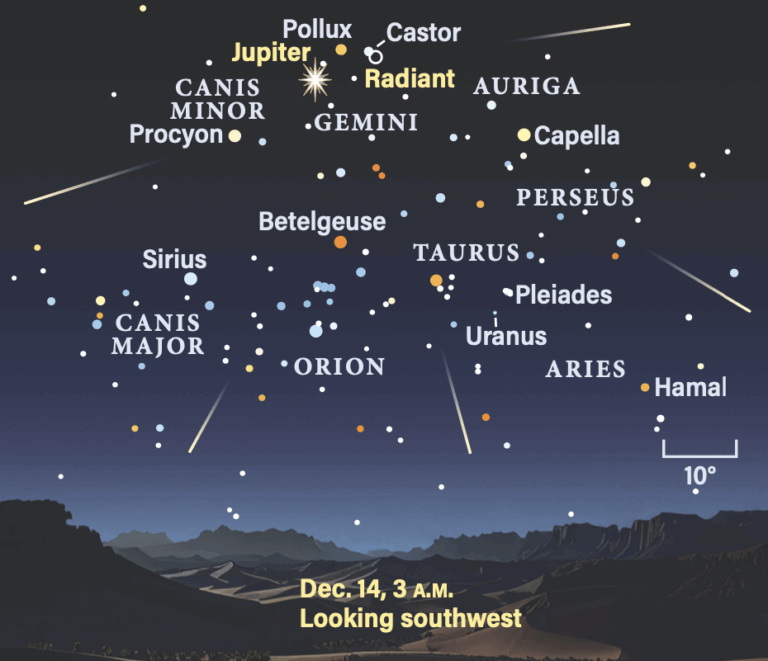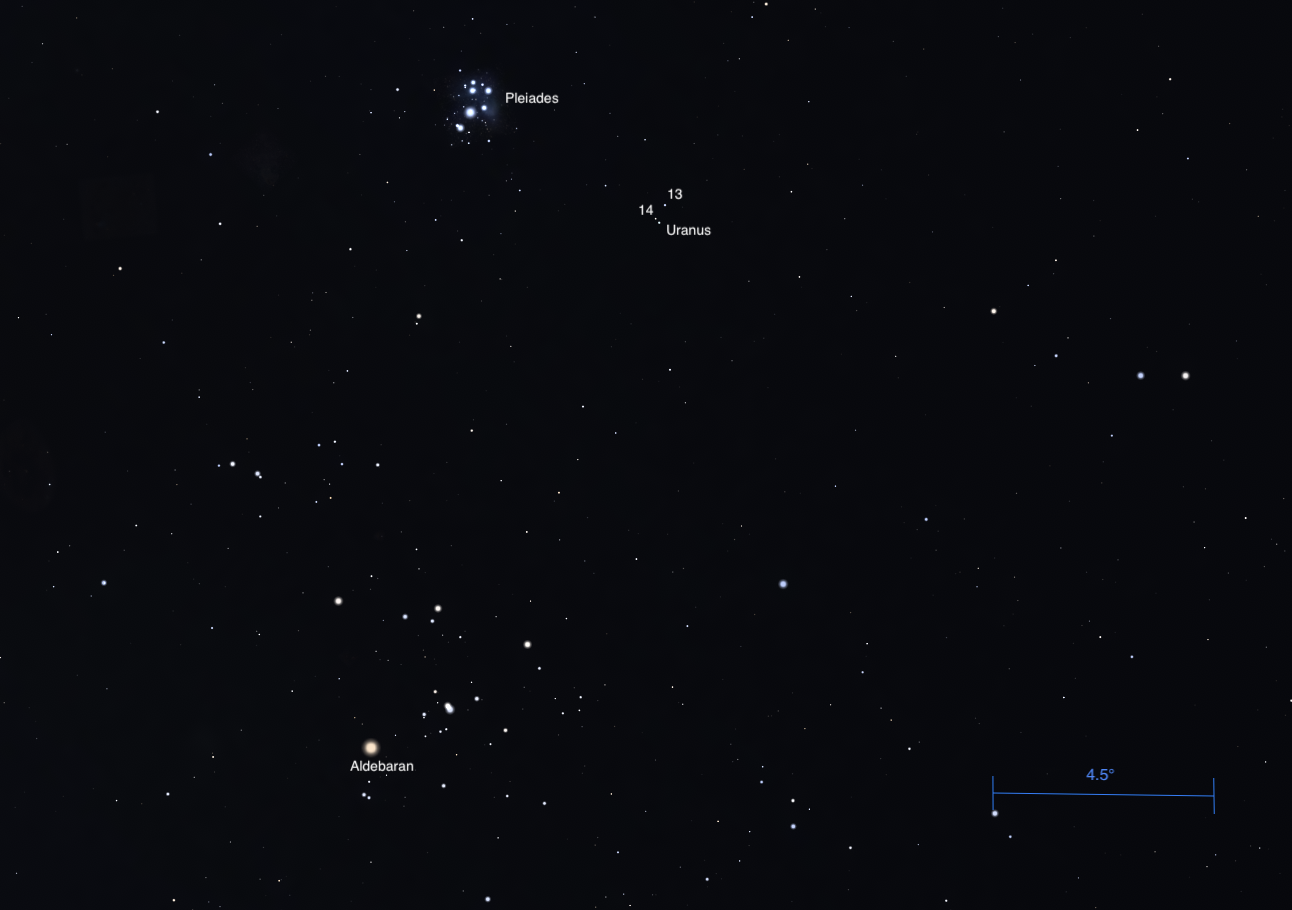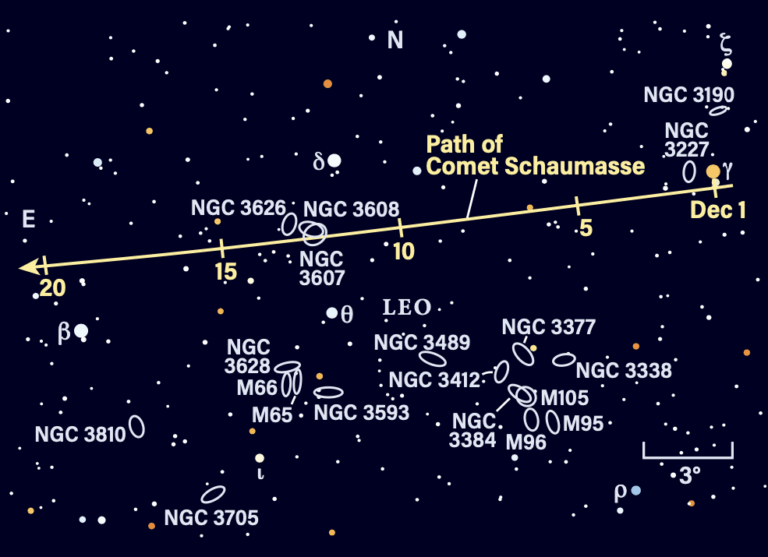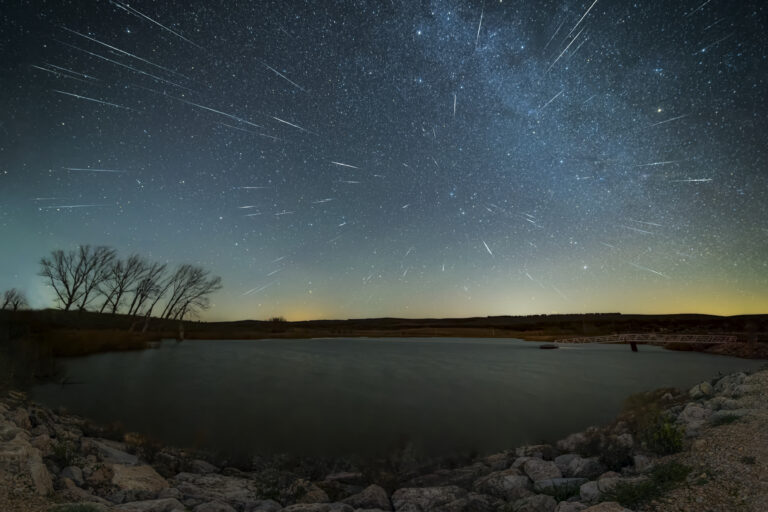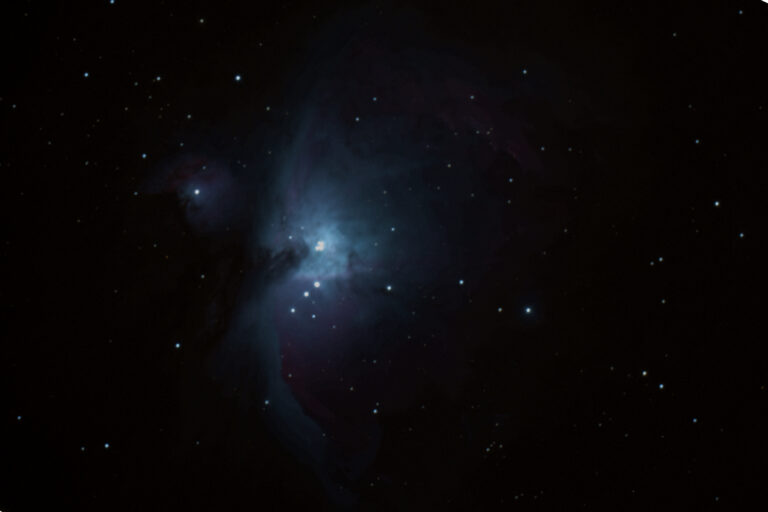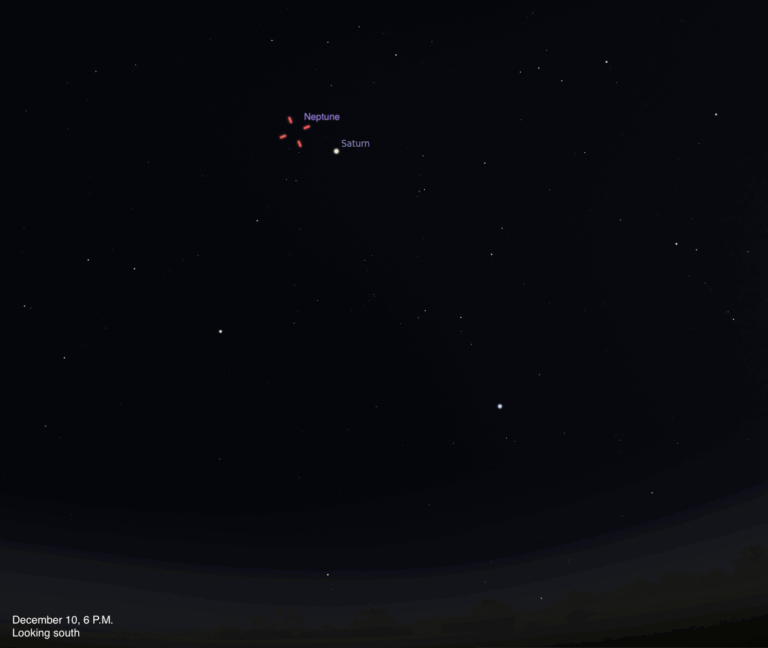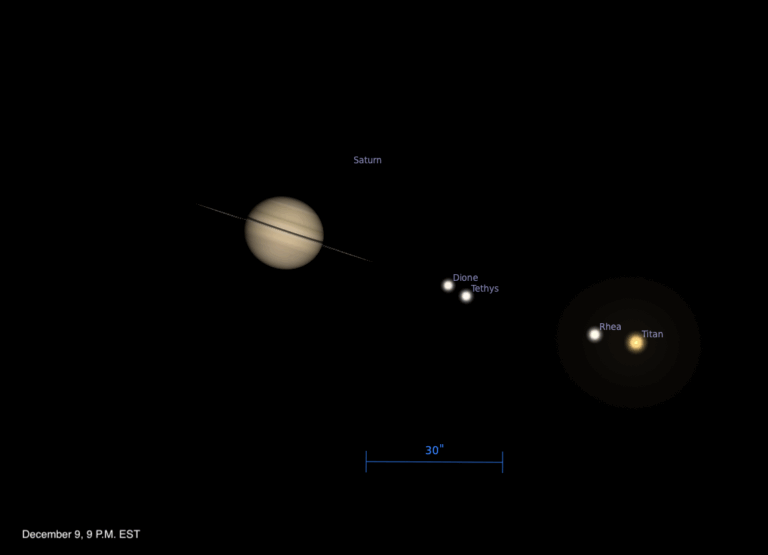Key Takeaways:
Head outside in the early evening and you can see the Big Dipper scraping the northern horizon. For latitudes north of about 40°, this conspicuous asterism never rises or sets (“circumpolar” in astronomical parlance), though December evenings find it at its lowest ebb. This means that the constellation on the opposite side of the North Celestial Pole, the familiar W-shaped Cassiopeia, currently rides highest in the sky.
Saturday, December 21
Earth’s winter solstice occurs at 11:19 p.m. EST. At that moment, the Sun reaches its farthest point south in the sky. The solstice marks the official beginning of winter in the Northern Hemisphere, and tonight has more hours of darkness than any other. From mid-northern latitudes, however, the earliest sunset occurred about two weeks ago and the latest sunrise won’t happen until early January.
If you’re game for a quick evening challenge, try to spot Neptune through binoculars. The distant planet lies halfway to the zenith in the south-southwest near the end of evening twilight and doesn’t set until nearly 11 p.m. local time. The magnitude 7.9 world appears against the backdrop of Aquarius, 1.3° west-southwest of the 4th-magnitude star Phi (φ) Aquarii. You’ll need binoculars to spy Neptune and a telescope to see its blue-gray disk, which spans 2.3″.
Sunday, December 22
The Ursid meteor shower peaks tonight. The shower’s radiant — the point from which the meteors appear to originate — lies in the constellation Ursa Minor, near the bowl of the Little Dipper. The radiant is visible in the north all night, but it climbs higher as dawn approaches. And the waning crescent Moon won’t interfere much even after it rises around 4:30 a.m. local time tomorrow morning. Observers with clear skies typically see 5 to 10 Ursid meteors per hour at the peak, but astronomers predict a possible enhancement this year that could briefly double or triple the normal rate.
Ruddy Mars grows more prominent before dawn with each passing week. The Red Planet now rises by 4:30 a.m. local time and climbs 20° above the southeastern horizon an hour before sunrise. Mars glows at magnitude 1.6, which is a full magnitude brighter than any of the background stars belonging to its host constellation, Libra the Scales. But there is a brighter object lurking in Libra: a waning crescent Moon. Luna stands 9° above Mars this morning; tomorrow morning, it will be 6° to the planet’s lower left. Unfortunately, a telescope doesn’t add much to the view of Mars, revealing a bland disk just 4″ across.
Monday, December 23
Uranus reached opposition and peak visibility nearly two months ago, but it remains a tempting target in December. The outer planet appears in the southeastern sky after darkness falls and climbs highest in the south around 8 p.m. local time. The magnitude 5.7 world lies in southwestern Aries the Ram, near that constellation’s border with Pisces the Fish and Cetus the Whale. Although Uranus shines brightly enough to glimpse with the naked eye from a dark site, binoculars will help your search immensely. The closest guide star is magnitude 4.4 Xi1 (ξ1) Ceti, which lies 4° to the southeast. A telescope reveals Uranus’ disk, which spans 3.7″ and shows a distinct blue-green hue.
Tuesday, December 24
A lone bright star now hangs low in the south-southwest during early evening. First-magnitude Fomalhaut — often called “the Solitary One” — belongs to the constellation Piscis Austrinus the Southern Fish. From mid-northern latitudes, it appears below the Great Square of Pegasus and about 20° above the horizon. How solitary is Fomalhaut? The nearest 1st-magnitude star to it, Achernar at the southern end of Eridanus the River, lies some 40° away.
Wednesday, December 25
This year provides a stunning “Christmas Star” for early evening viewers. Head outside during the deepening twilight and look to the southwest for the brilliant light of Venus. The brightest planet shines at magnitude –3.9 and shows up nicely from half an hour past sundown until it sets after 7 p.m. local time. A telescope reveals the planet’s 13″-diameter disk, which appears 84 percent lit.
New Moon occurs at 12:13 a.m. EST. At most New Moons, our satellite tracks across the sky with the Sun and remains hidden from view. But today, the alignment between the Moon and Sun is perfect and people in the right locales can view a solar eclipse. Observers across eastern Africa, southern Asia, and northern Australia will see the Moon take at least a bite from the Sun. The best views, however, come along a narrow path that touches Saudi Arabia at sunrise, then crosses southern India in late morning, parts of Indonesia and Singapore near midday, and the island of Guam about an hour before sunset. People there will witness an annular eclipse. The Moon appears slightly smaller than the Sun in the sky, so observers along this central track will see a ring of sunlight surrounding the Moon. Because the eclipse is not total, people will need to use safe solar filters to view it directly.
Friday, December 27
The variable star Algol in Perseus reaches minimum brightness around 8:51 p.m. EST, when it shines at magnitude 3.4. If you start watching it after darkness falls, you can see it more than triple in brightness, to magnitude 2.1, over the course of about five hours. This eclipsing binary star runs through a cycle from minimum to maximum and back every 2.87 days. Algol appears in the eastern sky after sunset and passes nearly overhead around 9 p.m. local time.
Jupiter passes behind the Sun from our perspective, a configuration astronomers call conjunction, at 1 p.m. EST. Needless to say, our star’s glare makes it impossible to see the planet. Jupiter will return to view before dawn in mid-January.
Although the Moon passed between the Sun and Earth just two days ago, its rapid orbital motion has already brought it back into view in the southwestern sky after sunset. As a bonus, brilliant Venus appears just 2° above Luna’s slender crescent. The two brightest objects in the night sky make a stunning pair from early twilight until they set shortly after 7 p.m. local time.
Sunday, December 29
The final week of the year offers an exceptional chance to spot the 10th-largest member of the asteroid belt, a collection of at least several hundred thousand objects that lies between the orbits of Mars and Jupiter. Asteroid 15 Eunomia is sliding through the conspicuous Water Jar asterism in the constellation Aquarius. This group of 4th- and 5th-magnitude stars, which comprises Gamma (γ), Pi (π), Zeta (ζ), and Eta (η) Aquarii, lies nearly 20° southwest of the southwestern corner of the Great Square of Pegasus. Eunomia currently glows at 10th magnitude, so you’ll need a small telescope to pick it up.




